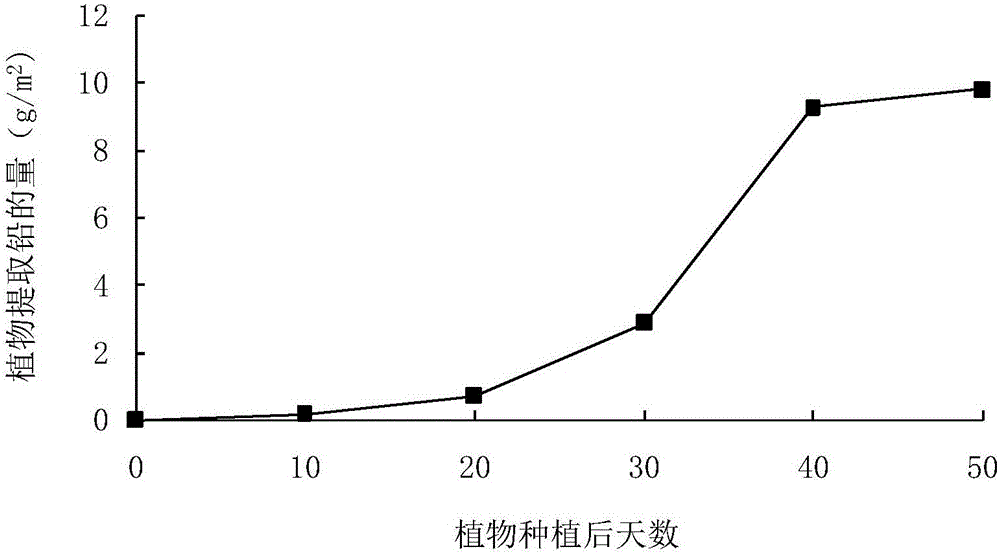Phytoremediation combination method for severe-plumbum-pollution paddyfield soil
A remediation method and lead pollution technology, which is applied in the fields of phytocombination remediation and soil heavy metal pollution prevention and control, can solve the problems of lack of research on plant species selection, configuration and growth control, limit the application of phytoremediation technology in heavy metal polluted soil, and achieve the reduction of Pb The effect of content
- Summary
- Abstract
- Description
- Claims
- Application Information
AI Technical Summary
Problems solved by technology
Method used
Image
Examples
Embodiment 1
[0014] Embodiment 1: A kind of phytocombination remediation method of heavily lead-contaminated paddy field soil. The specific implementation method is as follows: (1) The combination of plants for restoration is: 5 kinds of plants, barnyardgrass, spinosa, bamboo shoot, bermudagrass, and Polygonum; (2) The planting method is: plants of different types and different heights are planted at intervals , the distance between plants is 20cm; (3) plant harvesting period and harvesting method: 50 days after planting, when the amount of absorbing and extracting Pb reaches a saturated state (see the appendix figure 2 ) is harvested at one time, the whole plant is uprooted, and then processed intensively. After the plants are harvested, the soil is leveled, and the next round of phytoremediation can be carried out as needed; (4) Paddy field water management: Before the restoration, the paddy field is irrigated to a shallow water layer (about 3cm), and then plants are planted, and the wa...
PUM
 Login to View More
Login to View More Abstract
Description
Claims
Application Information
 Login to View More
Login to View More - R&D
- Intellectual Property
- Life Sciences
- Materials
- Tech Scout
- Unparalleled Data Quality
- Higher Quality Content
- 60% Fewer Hallucinations
Browse by: Latest US Patents, China's latest patents, Technical Efficacy Thesaurus, Application Domain, Technology Topic, Popular Technical Reports.
© 2025 PatSnap. All rights reserved.Legal|Privacy policy|Modern Slavery Act Transparency Statement|Sitemap|About US| Contact US: help@patsnap.com


